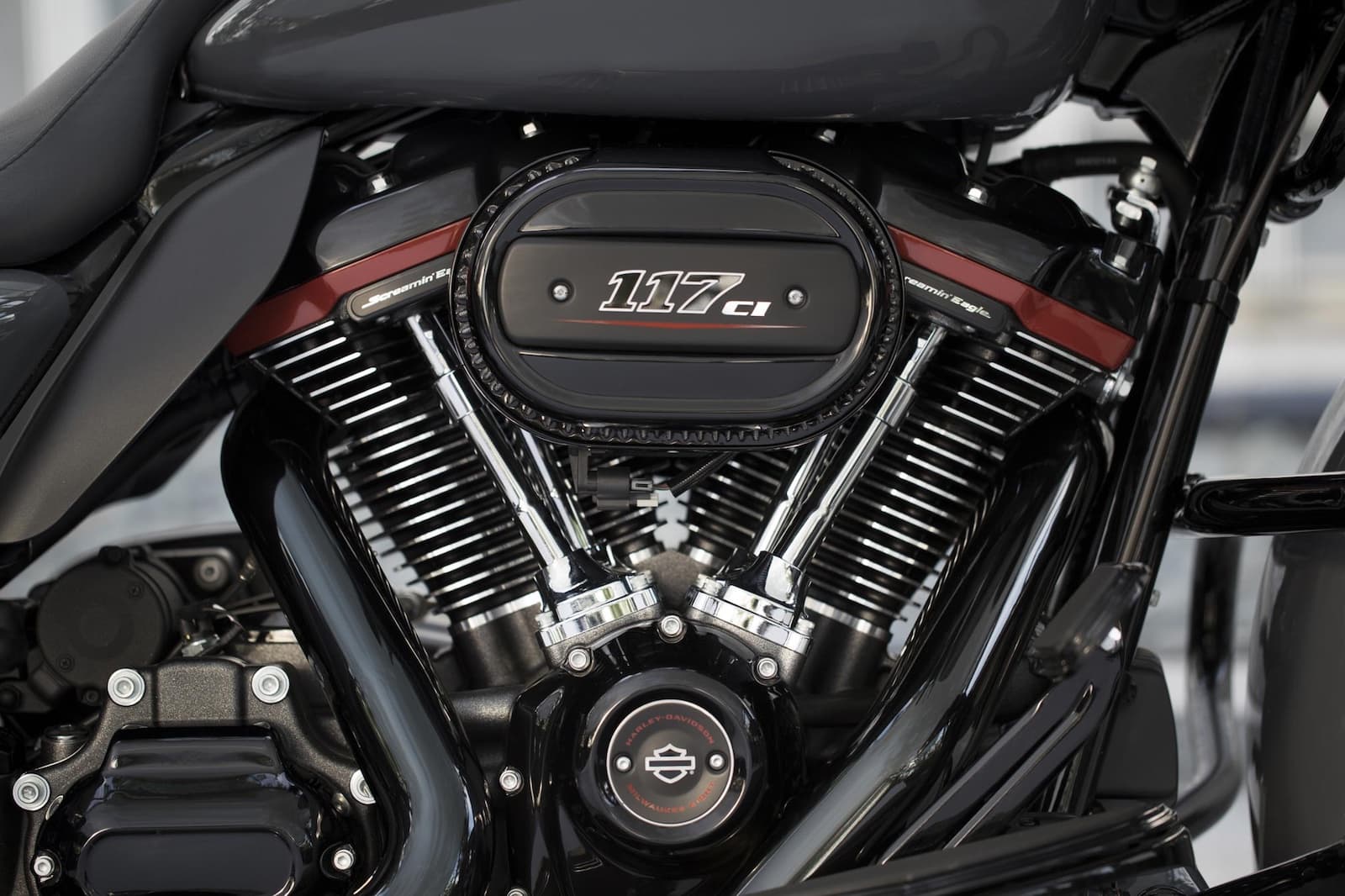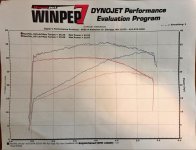Well... @Dool since you brought me into this "querelle", I shall give my opinion too...
First of all I wanted to establish some baseline, so a simple search for "Continental GT 535 dyno charts" was needed to have a common ground of discussion...
here is an interesting link:

 www.team-bhp.com
Dyno chart apparently from Powertronic, stock bike dynoed at 18.1hp...
www.team-bhp.com
Dyno chart apparently from Powertronic, stock bike dynoed at 18.1hp...
Then I stumbled upon this other fella, who machined a new head for the 535 from a billet of aluminum and he dynoed the bike with the stock head and his head.
Don't be fooled too much, the stock bike clocked at 25hp, but that was already with PC, free flowing filter and exhaust. I'd assume the completely stock bike would have clocked at 22/22,5hp. There is an interesting take though: designing the head cleverly he gained 5hp. Head alone.
Another interesting link:

 rapidbike.com.au
This is from DIMSPORT, a very reputable italian outfit that makes add on ECU and is in racing business since 25yrs.
rapidbike.com.au
This is from DIMSPORT, a very reputable italian outfit that makes add on ECU and is in racing business since 25yrs.
The purple line is stock, again 23hp.
Now if we mean all results you get around 21/21.5hp. These are three independent sources . I could doubt one, not all three of them.
There is another interesting fact: we dynoed a bike with bv head and ported conduit, but without a proper cam, optimized for high RPMs like the Kent, the full potential of that ported head wasn't exploited. The cam alone provided up 4hp, all other things being equal, makes you wonder what a 4 valve head could do...
Now this is a baseline, you might agree or not, but this are facts, not opinions.
Let's discuss now the HMC kit: that's a fully fledged kit with new 4 valve head and cams and presumably the head is properly ported, shifting the powerband toward the high RPM. Also valves might be way bigger than stock, we don't know. Do I think that it could provide up to 16hp over the 20hp stock? Yes I do. We know nothing about the fluid-dynamic study behind that head, so assuming they are lying is just a baseless opinion.
Moreover I would be surprised if TORQUE was doubled but that is not the case. Rather power was increased, but comparing power at two different RPMs values has not much meaning.
For a nice reading on power and torque give this link a go:

 motofomo.com
motofomo.com
Final thought: that is a complete package, that has been likely deeply optimized, so such a gain is more than achievable. The same @Dool has already shown a similar power output (32.6rwhp) for a smaller capacity bike (443 vs 500) so yes, that power level is more than achievable by a 500cc. Moreover 4 valves have always been used to make engine breath better and rev higher, and with higher rev comes higher power (not torque, read the link above). It isn't by chance that all sporty engines are 4 valves per cylinder, even 5 or 6 in some exotics solutions (Alfa romeo comes to mind). Two valves have always been related to slower revving but torquey engines.
Side note to all the well calibrated dyno butts out there: unless your butt knows math, you'll only be able to judge torque, because that is what propels you forward. And that is even more noticeable the more it's down low in the RPM range, since you'll feel a strong push forward when you're going at low speed. So whenever your butt judges a bike powerful, you'd rather use the expression "torquey", unless again your butt knows how to multiply...
I hope this shades some light on the topic. Peace.
First of all I wanted to establish some baseline, so a simple search for "Continental GT 535 dyno charts" was needed to have a common ground of discussion...
here is an interesting link:

Royal Enfield Continental GT 535 : Ownership Review (29,000 km and 7 years)
Royal Enfield Continental GT 535 : Ownership Review (29,000 km and 7 years)
Then I stumbled upon this other fella, who machined a new head for the 535 from a billet of aluminum and he dynoed the bike with the stock head and his head.
ELABORARE per bene GT continental (Pagina 2) / UCE mono EFI (Bullet 500 / Continental GT 535) / The Royals Forum
Forum The Royals.it Forum utenti e appassionati Royal Enfield
forum.theroyals.it
Another interesting link:

ROYAL ENFIELD 500 and 535 (Exclusive) | Rapid Bike Australia
Rapid Bike for Royal Enfield in tuning module. The EVO unit will manage the fuel injection and self tune on the 535 and 500 models.
 rapidbike.com.au
rapidbike.com.au
The purple line is stock, again 23hp.
Now if we mean all results you get around 21/21.5hp. These are three independent sources . I could doubt one, not all three of them.
There is another interesting fact: we dynoed a bike with bv head and ported conduit, but without a proper cam, optimized for high RPMs like the Kent, the full potential of that ported head wasn't exploited. The cam alone provided up 4hp, all other things being equal, makes you wonder what a 4 valve head could do...
Now this is a baseline, you might agree or not, but this are facts, not opinions.
Let's discuss now the HMC kit: that's a fully fledged kit with new 4 valve head and cams and presumably the head is properly ported, shifting the powerband toward the high RPM. Also valves might be way bigger than stock, we don't know. Do I think that it could provide up to 16hp over the 20hp stock? Yes I do. We know nothing about the fluid-dynamic study behind that head, so assuming they are lying is just a baseless opinion.
Moreover I would be surprised if TORQUE was doubled but that is not the case. Rather power was increased, but comparing power at two different RPMs values has not much meaning.
For a nice reading on power and torque give this link a go:

Power and Torque Explained — Math for Motorcycles
All about power (horsepower) and torque in motorcycles, and how they relate to top speed and thrust.
 motofomo.com
motofomo.com
Final thought: that is a complete package, that has been likely deeply optimized, so such a gain is more than achievable. The same @Dool has already shown a similar power output (32.6rwhp) for a smaller capacity bike (443 vs 500) so yes, that power level is more than achievable by a 500cc. Moreover 4 valves have always been used to make engine breath better and rev higher, and with higher rev comes higher power (not torque, read the link above). It isn't by chance that all sporty engines are 4 valves per cylinder, even 5 or 6 in some exotics solutions (Alfa romeo comes to mind). Two valves have always been related to slower revving but torquey engines.
Side note to all the well calibrated dyno butts out there: unless your butt knows math, you'll only be able to judge torque, because that is what propels you forward. And that is even more noticeable the more it's down low in the RPM range, since you'll feel a strong push forward when you're going at low speed. So whenever your butt judges a bike powerful, you'd rather use the expression "torquey", unless again your butt knows how to multiply...
I hope this shades some light on the topic. Peace.


